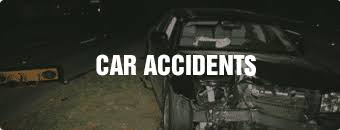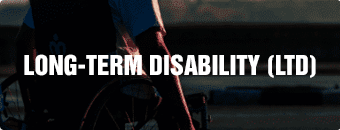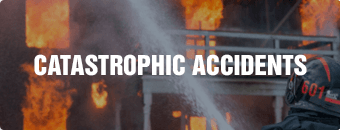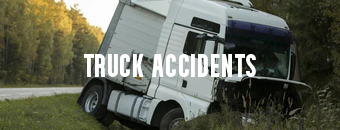- Our Firm
- Personal Injury
-
-
-
Personal Injury Lawyers
-
-
-
-
-
-
Injured in an accident? At Diamond & Diamond, our team of lawyers rely on their reputation in the field and extensive experience in personal injury to provide clients with a dedicated support system over the duration of their case.
-
-
-
-
-
HAVE YOU RECENTLY BEEN INJURED IN AN ACCIDENT?
-
-
-
- Real Estate
- Corporate
- Class Action

Safety First: Why Driving on Closed Roads Is a Bad Idea
How safe are public roads in Canada? Despite Transport Canada’s efforts to prioritize road safety, traffic-related fatalities and serious injuries continue to pose a problem on Canadian roads.
There were 1,768 deaths resulting from reported traffic collisions in 2021. That’s 1.3 percent, up from the 1,746 fatalities recorded in 2020. According to Transport Canada’s National Collision Database (NCDB), severe and total injuries from reportable motor vehicle collisions in Canada also increased.
In 2021, the number of severe injuries increased to 8,185, indicating a 4 percent increase from 2020, when there were only 7,868 injuries. Meanwhile, the total injuries, ranging from minimal to severe, recorded in 2021 were up to 108,018. This is 3.6 percent higher than the 104,286 total injuries reported in 2020.
Considering this data on traffic-related injuries, it’s not difficult to conclude that accidents are common on Canadian roads. Moreover, the outcomes can be tragic for those involved, their families, and even communities.
After a serious motor vehicle crash, closing the lane or road may be necessary in areas affected by the accident to prevent further harm. A road closed sign means that you can’t drive beyond that point. You must take an alternative route, primarily for safety reasons.
Other situations that require roads to be closed include construction, repairs, and hazards due to severe weather conditions. Regardless of the reason, closed roads or lanes are a safety measure for everyone on the road.
Unfortunately, some drivers may ignore barricades and still head down roads that have been closed. Driving on a closed highway or lane presents a significant risk to everyone on the road, which is why you shouldn’t drive on a closed road.
This article discusses why driving on a closed highway is a bad idea and the consequences of not obeying road closures. We’ll also provide tips to help motorists deal with the inconvenience of closed roads.
|
Key Takeaways
|
Understanding Road Closures and Their Importance
Various indications will alert drivers to a closed road or lane. Typically, these may include signage, barricades, tape, orange cones, or temporary lights. Encountering these traffic signs can be frustrating, especially when you have time-sensitive appointments.
The bright side is that some road closures are planned, so you can map out an alternate route before you head out. Others, however, can happen without prior notice, resulting in unforeseen delays and disruptions in your travel plans.
It’s common to be frustrated when you’re navigating through unfamiliar routes due to closed roads. However, despite the frustration and inconvenience, closing roads is important for ensuring safety and minimizing the impact on traffic flow in work zones.
To help you deal with the situation more calmly and responsibly, it may be beneficial to understand the different types of road closures and why they’re important.
Full road closures
Full road closures are when a road or highway is fully shutdown. It blocks the entire route, which prohibits motorists and pedestrians from accessing it for an extended period of time. When a road is fully closed, road users must use a detour route to reach their destination.
Generally, a road is fully closed to protect motorists from being exposed to work zones. Similarly, it also eliminates the risk that workers may face from traffic during road maintenance or construction.
Since traffic is often rerouted during a full road closure, workers can completely access roadway facilities. However, a road is fully closed where it’s impossible to safely complete the necessary work with a partial road closure.
A full road closure may also be necessary to ensure the safety of a community event and streamline area management. For example, during the Canada Day long weekend, Niagara Falls and Niagara Parks teamed up to enforce road closures near Queen Victoria Park.
Most full road closures are generally scheduled, so the public can plan their route and prepare for possible inconveniences.
Partial road closures
Partial road closures are when a sidewalk, shoulder, or one lane is closed, while allowing access to at least another lane for vehicular traffic. So instead of taking traffic off the regular route, motorists are redirected to the other side of the freeway.
Roads are partially closed when work only affects specific sections of a roadway, such as fixing potholes, installing utility lines, or repairing bridges. For instance, the City of Lethbridge in Alberta closed a portion of Whoop-Up Drive to allow crews to repair a catch basin.
Only one direction of traffic can move at a time during a partial road closure. As a result, flaggers will often have to direct motorists when to stop or proceed safely. In some cases, there may be temporary traffic signals to control traffic flow through limited lanes.
Other than road maintenance and construction, partial and full road closures can happen for a variety of reasons. Check out the video below to learn more about the typical situations that may require roads to be closed in Ontario and across Canada.
Relevant Laws on Road Closures in Canada
In Canada, drivers on the road are subject to a mixture of federal, provincial, and municipal laws, which govern road safety and how to safely operate a motor vehicle. If you violate these laws, you could be fined, your licence may be suspended, or you may even be imprisoned.
When deciding to close a road, there are several laws and regulations that the government can rely on.
Here are a few of the laws that the government can use to implement road closures in Canada.
Canada’s Government Property Traffic Act
Under Section 7 of Canada’s Government Property Traffic Regulations (Regulations), only the following people have the authority to place or erect traffic signs or devices on any government property:
- The Minister of Public Works
- The Minister of any department having control or management of government property
- The Commissioner
One of the authorized uses of traffic signs or devices on government property is restricting or controlling the use of any highway by any vehicle or class of vehicles. They can also be used to make any highway a one-way road.
Section 9 of the Regulations requires drivers to adhere to all traffic signs and devices. Similarly, under section 11, drivers must obey traffic directions provided by an authorized constable or law enforcement officer.
Alberta’s Highways Development and Protection Act
The Highways Development and Protection Act (Alberta Act) establishes the administrative structure of Alberta’s highway network. It prioritizes public safety by regulating the physical condition of the highways in the province.
Under Section 38.1 of the Alberta Act, the Minister may close an entire unsurveyed highway or any portion of a road under the Crown’s ownership.
Moreover, the Alberta Act also authorizes the Minister to implement closures, prohibitions, or restrictions on either a part of a highway or an entire highway for the following reasons:
- Safety or security reasons
- A special event
- Undergoing construction or maintenance
Section 22 of the Municipal Government Act also allows the closure of municipal roads through or adjacent to titled land if the road isn’t necessary for the public because an alternate route is available.
Ontario’s Highway Traffic Act
Ontario’s Highway Traffic Act (Ontario Act) establishes regulations on how vehicles should be used on Ontario’s roads. Section 134 of the Ontario Act grants a police officer the authority to close a highway or any portion of it to vehicles by these methods:
- Posting signs or causing to be posted signs to that effect
- Installing or causing to be placed traffic control devices as specified in the regulations
Likewise, section 134(3) prohibits any person from driving or operating a vehicle on a closed highway or part of it while disregarding signs or traffic control devices unless they’re driving one of the following vehicles:
- Ambulance
- Fire department vehicles
- Road service vehicles
- Public utility emergency vehicles
- Police department vehicles
- Vehicles of officers enforcing the provisions of the Ontario Act
Manitoba’s Highway Traffic Act
According to Transportation and Infrastructure Minister, Doyle Piwniuk, amendments to the Highway Traffic Act (Manitoba Act)are necessary to address the dangerous behaviour of drivers who disregard road closure signs and barricades.
Those who continue to use roads that have been closed because of severe weather and other unsafe conditions pose a danger to motorists, law enforcement, emergency responders, and road maintenance staff.
Therefore, the Manitoba government introduced new offences for driving on roads that have been closed. As of July 1, 2023, motorists can be hit with significant fines and penalties when operating a vehicle on a closed road in Manitoba.
The amendments align Manitoba with other provinces that had already made driving on closed roads an offence, such as Saskatchewan and Ontario. It’s also worth noting that going around road-closure barricades has always been against the law.
However, because of the amendments, it’s much easier for a traffic officer to enforce the provision, as it is now a specific offence under the Manitoba Act.
Possible Legal Consequences of Driving on Closed Roads in Canada

A closed road means that a driver must take a different route. However, despite clear signs telling drivers to stay away, some may try to drive through a closed road.
Here’s a list of the legal consequences for ignoring road closure signs.
Monetary fines
Road closures are intended to minimize accidents and ensure the safety of everyone on the road. A road-closed sign prohibits motorists from accessing the highway or a portion of the road, and you can be fined if you don’t obey them.
Fines for disobeying traffic signs can be minor or substantial. Generally, the fine for driving on a closed road in Ontario is $110.
In 2020, six drivers were fined for ignoring a road closed sign in Ontario, as they drove into a prohibited portion of the highway that was closed because of a fatal crash investigation.
Another three drivers were charged for driving on closed highways during the height of the storm in 2022.
Manitoban motorists, on the other hand, who disregard warning signs and drive on closed highways face stiffer penalties. Effective July 21, 2023, people who ignore road closures in Manitoba are subject to the following new fines:
- $298 if you’re operating light vehicles, including cars, SUVs, or pick-up trucks
- $672 if you’re driving a heavy vehicle
Those fines can increase to $672 for light vehicles and $1,296 for heavy vehicles if you instruct someone, such as an employee, to drive on a closed road in Manitoba.
Demerit points penalty
Demerit points are created to hold drivers accountable for their driving behaviours. The rules may differ for new drivers and those that have a full license. In Canada, you start with zero demerit points and earn points for violating certain traffic laws.
The type of offence you commit determines how many demerit points are added to your record. The rule of thumb is that more serious traffic offences lead to more demerit points.
In Manitoba, motorists convicted of driving on a closed road will get two demerit points. In severe cases, they can also be fined, which can range from $2,000 to $5,000.
In Ontario, you’ll get three demerit points if you drive on a closed road. Such points remain on your driving record for two years from the date of the offence. You can even lose your licence if you accumulate a certain number of demerit points.
Liability for accidents
Several parties, such as negligent drivers, municipalities, and government agencies, may be liable for car accidents caused by a road hazard.
In such cases, it’s important to have an experienced car accident lawyer who can investigate the road hazard and determine who should be held liable for causing the accident. Moreover, like any traffic offence, disregarding road closure signs can also affect liability for accidents.
For instance, under section 39 of the Highways Development and Protection Act, every individual using a highway that’s closed to traffic does so at their own risk. Therefore, the highway authority bears no responsibility for any injuries that one may suffer if they drive on a closed road.
Additionally, a conviction for driving on a closed road can affect your insurance policy. In some instances, your insurance provider may not cover your losses for personal injuries or property damage if you were driving on a closed highway.
Potential Dangers of Driving on a Closed Highway in Canada

Public safety is the primary purpose of road closures. This means that disobeying “road closed” signs and proceeding past the barrier can be dangerous.
Below, we’ve listed the dangers you can be exposed to when you drive on a closed road.
Unsafe road conditions
Disregarding road closed signs can expose you to unsafe road conditions. Remember that highways are usually closed when there are potential dangers on the road, such as bumpy edges, gravel, flooding, slick surfaces, debris, and snow.
These conditions can make roads unsafe for motorists, which can increase the likelihood of an accident, so road closures may be necessary. Accidents in dangerous road conditions can result in life-threatening injuries, expensive lifetime medical care, and even death.
Not only are you risking your life by ignoring closed road signs and driving on unsafe roads, but you’re risking the lives of others as well. Since closed roads are often impassable, it will be more challenging and dangerous for emergency services to respond if you get into a car accident.
Construction or work zones
Work zones are roadways where construction, maintenance, or utility work is underway. Hazards often appear unexpectedly in these areas, making them extraordinarily dangerous for roadway workers and motorists.
Most work zones have reduced speed limits. Unfortunately, some drivers are impatient and may speed in these areas. It’s not surprising that speeding is the most significant factor contributing to car accidents in work zones.
Likewise, the sudden sign for lane closures can be challenging for motorists. While enjoying a scenic mountain drive, you may unexpectedly encounter a curve in a paving project or guardrail replacement. When unaware of these hazards, you’re more likely to be involved in an accident.
Furthermore, in many instances, a road project may shut down the entire highway and send you on a detour. If you don’t pay close attention to a road closed sign or ignore it, you may hit equipment or a worker down the road.
You’ll likely encounter the following issues if you drive on a lane or highway that’s been closed for construction or maintenance activities:
- Limited visibility due to dust or construction materials
- Kicking up gravel, which can cause your windshield to crack
- Colliding with concrete barriers while attempting to merge or turn
- Causing a severe injury to a worker on the road
Serious collisions and accidents
Accidents that happen on closed roads can have more devastating outcomes than those on open roads. Although there are hazards on open highways, the conditions on closed roadways are more dangerous.
You can expect the road surface of closed highways to be slippery, uneven, or obstructed due to severe weather or construction-related hazards. Such conditions will make it harder for you to control your vehicle, which can result in a more serious collision.
Even if the weather is fine, closed roads may have potholes or narrow spaces. These can be unsafe to drive on and can damage your vehicle. Debris and other hazardous materials can make a closed road impassable, so you can get stuck or stranded if you ignore the sign and continue to drive.
If multiple drivers disobey road closure signs, there’s also a higher risk of crashing at intersections or narrow passages. With inadequate safety measures and law enforcement on closed roads, it’s easier for motorists to engage in dangerous driving behaviour.
If you know where you’re going, you can safely disregard green and blue road signs, as they only provide destination information. Instead, pay more attention to yellow road signs for upcoming hazards and regulation signs in white, black, red, and green.
Pro Tip
Injured on a Closed Road? Consult With a Diamond & Diamond Lawyer
Bad and unsafe road conditions may cause motorists to lose control of their vehicles, resulting in catastrophic collisions. Slippery surfaces caused by bad weather and uneven pavement in construction are some of the dangers motorists may face while driving on the road.
Such situations pose a significant risk to drivers, vehicle occupants, pedestrians, and other road users, which is why a road or lane must be closed. Whether it’s for poor road conditions, road maintenance, or construction work, roads are often closed for public safety.
If you were injured because of a road hazard, you can seek compensation for your injuries from several parties, such as negligent drivers and government agencies. But who can be held responsible when you get injured on a closed road?
If you were injured while you were driving on a closed road, proving liability and obtaining compensation can be complex. You may even be held partially liable for ignoring the road closure sign.
The knowledge and experience of a personal injury lawyer will be valuable in these cases. Diamond & Diamond Law has a team of reputable lawyers who can assist with your legal needs. Contact our firm today to further discuss your case and options.
Did you get into an accident on a closed highway? Call Diamond & Diamond Law to know your rights and the potential legal consequences.
Need a Lawyer?
We are here 24/7 to address your case. You can speak with a lawyer to request a consultation.
1-800-567-HURTGet started with a free consultation
OUR TEAM
- Bilal Hashimy
- Qaisar Yaqub
- Shir Zisckind
- Gray Sinden
- Shelly Bard
- Christian Brown
- Daly Canie
- Mohsen Heydari
- Tanveer Sohal
- Erin MacDonald
- Prianka Virdi
- Noah Brownstone
- Justin Kaminker
- Harinder S. Bhatti
- Craig Yargeau
- Kiran Birk
- Amit Singh
- Andrei Teju
- Maria Zahid
- Matthew Douglas
- Jacob Elyk
- Harry Gill
- Aria Nejatali
- Jesse Singh
- Joel McLeish
- Kristina Olivo
- Egi Bano
- Ainsa Hepburn
- Cam Woolley
- Charles Thompson
- Alexandra McCallum
- John Sime
- Allan Cocunato
- Patrick Poupore
- Erika Henderson
- Marina Korshunova
- Brandon Handelman
- Regeena Alapat
- Ryna Kim
- Natalia Poliakova
- Isaac Zisckind
- Manpreet Bhogal
- Mathura Santhirasegaram
- Nikolai Singh
- Sandra Zisckind
- Jeremy Diamond
- Michael Blois
- Darryl Singer
- Nadia Condotta
- Tinashe Madzingo
- Megan Armstrong
- Veronica D’Angelo
- Corey J. Sax
- Zev Bergman
- Scott Tottle
- Steven Wilder
- TJ Gogna
- Jillian Carrington
- Joshua Himel
- Simon Diamond
- Cory Rubin
- Simon Mariani
- Brandon Greenwood
- Basil Bansal
- Nastassia Ivanova
- Tania Fleming
- George Laloshi
- Patrycja Majchrowicz
- Diana Iakossavas
- Dior Africa
- Alex Ragozzino
- Liana Saccucci
- Richard J. Chang
FAQs on Driving on Closed Roads
How can you check road closures and conditions across Canada?
You can plan an alternative route and minimize the inconvenience by checking potential highway closures and conditions before you go out.
In Canada, there are several websites and apps that you can use to get up-to-date information and notifications about possible delays, roadblocks, or accidents along your route. Here’s a list of some of them:
- AMA Road Reports
- DriveBC
- New Brunswick 511
- Alberta 511
- Ontario 511
- Manitoba 511
- Quebec 511
- Nova Scotia 511
- Newfoundland & Labrador 511
- Yukon 511
- Northwest Territories Highway Conditions
What should you do if you encounter a road closure sign while driving?
Coming across a road-closed sign can be frustrating, especially when you’re in a hurry to reach your destination. That’s why planning is the best way to avoid the hassle of encountering closed roads. However, if you’re already there, you must take the following steps:
- Drive at a lower speed
- Be attentive to traffic controllers
- If there’s a traffic controller, wait for instructions on when to pass
- Follow directions of a detour sign for an alternate route
What are other road signs you must be familiar with in Canada besides road closures?
Being alert to traffic signs is very important when you’re driving. The specific locations of these signs may vary based on the province or territory’s evaluation of where they should be placed. In any event, here’s a list of other signs you should be familiar with:
- Stop sign
- Yield sign
- Parking sign
- School zone sign
- Road work sign
- Turning signs
- Do-not-enter sign
- One-way street sign
NEED A LAWYER? CONTACT OUR TEAM TODAY
Chat Now
OR CALL NOW FOR A FREE CONSULTATION
 1-888-INFO-LAW
1-888-INFO-LAW
Diamond & Diamond British Columbia Head Office
1727 West Broadway, Suite 400, Vancouver, British Columbia
Barrie
Main Office
168 Bayfield Street
Calgary
Main Office
1331 Macleod Trail SE, Suite 645
Edmonton
Head Office
4246 97 Street NW, Unit 103
Halifax
Consultation Office
1701 Hollis St
London
Main Office
256 Pall Mall St, Suite 102
Oshawa
Consultation Office
50 Richmond Street E, Unit # 108 B
Ottawa
Main Office
955 Green Valley Crescent, Unit 315
Sudbury
Main Office
31 Larch Street, Unit 300
Surrey
Main Office
1104 – 13737 96 Ave, Surrey, BC V3V 0C6
Toronto
Head Office
255 Consumers Road, 5th Floor
Toronto
Consultation Office
1678 Bloor Street, Suite 302
Vancouver
Head Office
1727 West Broadway, Suite 400
Windsor
Main Office
13158 Tecumseh Rd. E. Unit 3B
Additional Areas Served
- Ajax
- Alberta
- Aurora
- Barrie
- Belleville
- Brampton
- Brantford
- Brockville
- Burlington
- Burnaby
- Calgary
- Chatham
- Collingwood
- Durham
- Edmonton
- Etobicoke
- Hamilton
- Kelowna
- Kingston
- Kitchener
- Leamington
- London
- Markham
- Milton
- Mississauga
- Muskoka
- Newmarket
- North York
- Oakville
- Orangeville
- Orillia
- Oshawa
- Ottawa
- Owen Sound
- Parry Sound
- Perth
- Peterborough
- Pickering
- Prince Edward County
- Richmond
- Richmond Hill
- Sault Ste Marie
- Sarnia
- Scarborough
- St. Catharines
- Stouffville
- Sudbury
- Surrey
- Thunder Bay
- Timmins
- Toronto
- Uxbridge
- Vancouver
- Waterloo
- Windsor
- Whitby
- Woodstock
- Wallaceburg
© 2021 Diamond and Diamond Lawyers LLP. All Rights Reserved.













